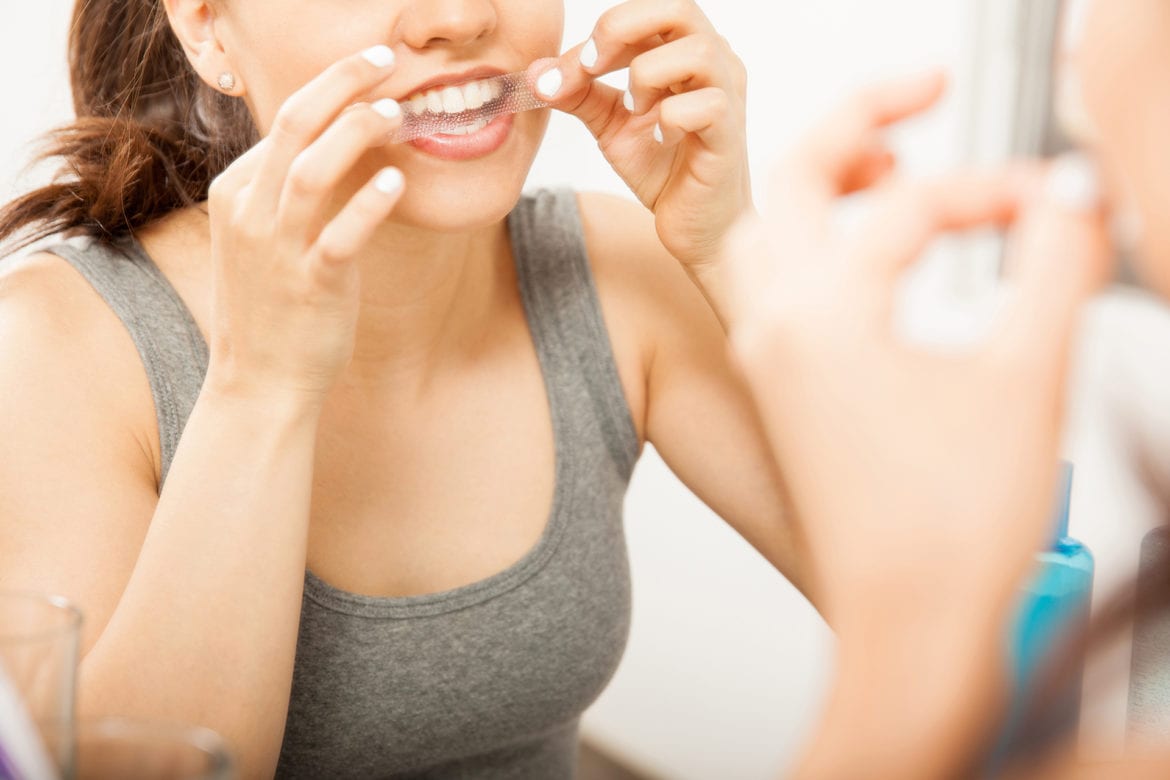From toothpastes to gels, strips, mouth trays and rinses, there is a dizzying array of products that claim to lighten, brighten and whiten your teeth. And with so many options lining drugstore shelves, it can be daunting to figure out the right method for you.
But are at-home teeth whitening products as effective as they claim? And are they safe? We asked some experts to find out.
HOW DOES TEETH WHITENING WORK?
Teeth whitening products sold over the counter work in one of two ways, the experts we spoke with said. They either scrape away stains using physical force or bleach those stains with the same chemicals used for in-office whitening procedures.
Physical abrasion: Products that have any sort of grittiness — whether they’re whitening toothpastes, regular toothpastes or just plain baking soda — will act as an abrasive and physically file away stains that occur on the surfaces of your teeth, said Dr Dorota Kopycka-Kedzierawski, a dentist at the University of Rochester Medical Center.
Many regular toothpastes contain a little bit of texture for this reason, and brushing itself is an act of physically scraping off stains and debris.
Chemical bleaching: Most whitening strips, gel-filled mouth trays and rinses work by putting your teeth in contact with chemical bleaching agents such as carbamide peroxide or hydrogen peroxide. One major difference between these products and in-office versions, said professor of molecular pathobiology Timothy Bromage at the NYU College of Dentistry who specializes in bone and tooth biology, is that the concentrations of chemicals in over-the-counter products are much lower.
WHICH PRODUCTS WORK?
Physical abrasion and chemical bleaching products are both effective at whitening teeth, said Dr Laura Tam, the dean of dentistry at the University of Toronto.
When toothpaste is advertised as “teeth whitening,” it usually means it has more of an abrasive quality than regular toothpaste, she said, but even regular toothpastes that don’t have any “whitening” claims on their packaging will work.
Chemical bleaching products can similarly reduce external stains — whether from coffee, tea, red wine or cigarettes. They can also be effective at reducing stains that occur in the inner layer, or dentin, of the teeth, which can develop after blunt force or traumatic tooth injuries, or in children after taking certain antibiotics, Dr Kopycka-Kedzierawski said.
Pigmented foods and drinks can also seep into the enamel and stain the insides of teeth. Some people with naturally very porous enamel are especially prone to this kind of staining.
The only trade-off with at-home chemical bleaching products is that since the concentrations of chemicals are much lower, they will take longer to work than in-office methods, Dr Tam said. And not everyone will see whitening effects on their internal teeth stains.
People’s enamel will absorb bleaching agents differently, she said, so the efficacy can vary. And some people just have naturally darker teeth than others, because of their genetics.
LED light whitening kits are another popular product. They involve applying a whitening gel to your teeth and holding a tray in your mouth, or biting into a mouth tray full of gel, and using a bright light to illuminate the gel. In theory, they work because LED light can activate the bleaching chemicals to get them to work faster, Dr Tam said.
Unfortunately, she added, “the body of evidence does not suggest you can activate the bleaching agent using anything like light or heat.” Because these products involve applying bleaching chemicals to your teeth, you might still see whitening results, but the LED light process is probably not adding much.
Baking soda, mixed with water to form a paste, is also something Dr Kopycka-Kedzierawski said her patients had commonly used as a scrub for the teeth. There is evidence it can work to remove external stains and reduce bacteria, she said, although you’re probably better off just using a dentist-recommended toothpaste, since baking soda doesn’t provide fluoride.
Activated charcoal is another ingredient often included in whitening toothpastes. However, there is no scientific evidence that activated charcoal is effective or safe for dental care, and the American Dental Association does not recommend it, Dr Kopycka-Kedzierawski said.
In fact, activated charcoal can be overly abrasive and can damage your enamel and gums.
ARE TEETH WHITENING PRODUCTS SAFE?
Abrasive teeth whitening products are generally safe, Dr Tam said, but scrubbing your teeth with particles that are too hard, or brushing with abrasive material for longer or more often than is recommended, can wear down the enamel.
This can be counterproductive to your whitening efforts, Prof Bromage said, since the enamel is what that makes your teeth look white. Dentin, the stuff that makes up the inner part of the tooth, is a yellow-brown color. If you wear down the white enamel too much, the color of the dentin starts to show through.
For those looking for a product that won’t be too harsh, Dr Kopycka-Kedzierawski recommended choosing one with a seal of acceptance from the ADA, which means it has been deemed safe and effective by the association.
In general, Dr Tam said, at-home chemical bleaching treatments are safe and effective when used as advertised. But it’s best to go with products that have lower concentrations of chemicals and shorter exposure times, she said. Using chemical-based treatments incorrectly, by leaving them on for too long or applying the chemicals too high so they reach your gums, can put you in danger of damaging your teeth and injuring your gums.
In this vein, Prof Bromage said, over-the-counter whitening products should not hurt, especially on first application. Pain is a sign that you are either overdoing it or that there’s something happening that requires your dentist’s attention.
Anything that claims to be “extra strong” is probably best avoided, Tam said.

